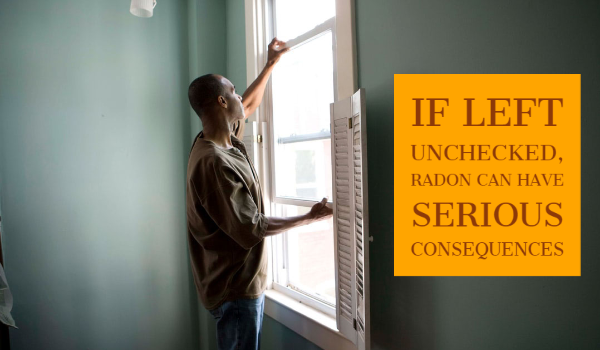Believe it or not, there is probably a radioactive chemical element in your house that is decaying slowly, and this is perfectly natural. The element is known as radon, and it is formed by the radioactive decay of radium-226, which is mostly found in uranium ores, phosphate rock, shales, and other igneous and metamorphic rocks. It is present in the soil of many home structures and slowly makes its way upwards while taking on a gaseous form. While it doesn’t emit a green glow nor will it give you superpowers, it should make you think about radon testing.
The Serious Consequences of Radon
If you think that radon is not a serious issue to be concerned about, or is one of those “random and rare” occurrences that hurt other people, think again. If you have a radon leak in your house that goes unchecked for too long, you should be aware that the risk of lung cancer increases approximately 16% per 100 Bq/m increase with long term radon exposure. Lung cancer is not something to wish away or fool around with, and it would behoove you to take it seriously.
You can easily mitigate the anxiety of radon contamination and future illness by following some of the tips below. Start slow and ease yourself into the process so that you understand everything about radon, why it can be a potential hazard, and how simple it can be to fix.
Test First, Ask Questions Later
If thinking about radon in your home is already causing you to have a panic attack, take a deep breath and settle down. There are acceptable levels of radon for the home, and as long as you don’t exceed these levels, you have nothing to worry about. In order to find out what your specific levels are, you have either use a test kit yourself (inexpensive and usually simple to read) or hire a radon testing company to find out the levels. The benefit of the latter is that they can recommend solutions that same day to take care of the problem. As long as you know your levels, you can take actions toward a solution.
Radon testing does not have to be a laborious task, and home test kits can take many forms. The most basic are open-air jars that contain activated charcoal, which you can mail to a lab for testing after letting them sit anywhere from two to seven days. Long-term radon tests are also available, which use alpha particle tracking to measure radon from 90 days to one year and can give a more accurate annual reading of your radon levels. Continuous radon testing is also available in electronic monitors that can be plugged into the wall, giving you an accurate average reading. Whichever you choose, you’ll be better off having all the information you need.
Solutions to High Radon Levels
Having high radon test results does not mean your home is doomed to condemnation or destruction. With proper and precise radon testing, you can receive accurate results that can, therefore, be mitigated with specific localized solutions. There are four principal ways that high radon levels are usually taken care of in a residence: soil suction (removing the high radon soil from beneath the house), ventilation improvements, a radon sump pump, or a positive pressurization system. The EPA notes that the most commonly used radon mitigation method is a vent system and fan, which pulls radon gas from beneath the home (where they originate) and moves it to the outside.
Breathe Easier When Radon Is Taken Care Of
Having radon gas in your house is not the end of the world but it can lead to serious consequences if left unchecked. Hopefully, this article has shown you that not only is radon easy to test for, but it’s also relatively simple to mitigate. Not only will you be a more informed homeowner, but since radon gas is known to be harmful to the lungs, you’ll literally breathe easier once you take care of this problem. For more information, contact Affordable Radon Colorado today.


Recent Comments